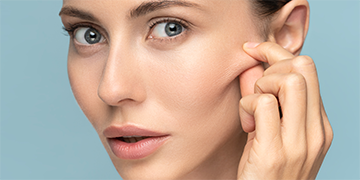Introduction
Hair loss is a common concern that affects millions of people worldwide. While it can be a natural part of aging, it can also be triggered by various factors such as genetics, stress, hormonal changes, and nutritional deficiencies. Understanding these causes is essential in order to find effective solutions for thicker, healthier hair. In this blog post, we will explore personalized treatments for hair loss, delve into various methods, and discuss how these solutions can help individuals regain their confidence and achieve fuller hair.
Understanding Hair Loss
Types of Hair Loss
Before diving into treatments, it’s crucial to understand the different types of hair loss:
-
Androgenetic Alopecia: This hereditary condition, also known as male or female pattern baldness, is the most common form of hair loss, affecting both men and women.
-
Alopecia Areata: An autoimmune condition that causes sudden hair loss in patches.
-
Telogen Effluvium: A temporary form of hair loss triggered by stress, illness, or hormonal changes that cause more hairs to enter the shedding phase.
-
Traction Alopecia: Hair loss caused by tight hairstyles that pull on the hair follicles.
-
Scarring Alopecia: A group of rare disorders that destroy hair follicles, leading to permanent hair loss.
Causes of Hair Loss
Understanding the root causes of hair loss is crucial for developing a personalized treatment plan. Common factors include:
- Genetics: Family history plays a significant role in determining your likelihood of hair loss.
- Hormonal Changes: Fluctuations in hormones due to pregnancy, menopause, or thyroid issues can lead to hair thinning.
- Nutritional Deficiencies: Lack of essential nutrients like iron, zinc, and vitamins can weaken hair and promote loss.
- Stress: Chronic stress can disrupt the hair growth cycle, leading to excessive shedding.
- Medical Conditions: Certain diseases, such as polycystic ovary syndrome (PCOS) or lupus, can contribute to hair loss.
Personalized Treatments for Hair Loss
1. Nutritional Approaches
Balanced Diet: A well-rounded diet rich in vitamins and minerals can significantly improve hair health. Key nutrients include:
- Protein: Hair is primarily made of a protein called keratin. Consuming adequate protein from sources like lean meats, fish, eggs, and legumes can help strengthen hair.
- Iron: Iron deficiency can lead to hair loss. Incorporating iron-rich foods such as spinach, red meat, and lentils can combat this issue.
- Zinc: Zinc is essential for hair tissue growth and repair. Foods like nuts, seeds, and whole grains can provide this nutrient.
- Vitamins A and C: These vitamins help produce sebum, an oily substance that conditions the scalp. Foods like carrots, sweet potatoes, and citrus fruits are excellent sources.
Supplements: In some cases, dietary changes alone may not suffice. Supplements like biotin, vitamin D, and omega-3 fatty acids can be beneficial for promoting hair health. Always consult with a healthcare provider before starting any new supplements.
2. Topical Treatments
Minoxidil: This over-the-counter treatment is FDA-approved for both men and women. It works by stimulating hair follicles and increasing blood flow to the scalp, encouraging hair growth. Minoxidil is available in liquid and foam forms, and it may take several months of consistent use to see results.
Finasteride: This prescription medication is primarily for men with androgenetic alopecia. It works by inhibiting the hormone dihydrotestosterone (DHT), which contributes to hair loss. Women, especially those who are pregnant or planning to become pregnant, should not use finasteride.
Natural Oils: Essential oils like rosemary, peppermint, and lavender have been shown to promote hair growth. Diluting these oils in a carrier oil and massaging them into the scalp can stimulate hair follicles and improve circulation.
3. Medical Treatments
Platelet-Rich Plasma (PRP) Therapy: This innovative treatment involves drawing a small amount of blood from the patient, processing it to concentrate the platelets, and injecting it back into the scalp. PRP contains growth factors that can stimulate hair follicles and promote new hair growth. Most patients require multiple sessions for optimal results.
Hair Transplant Surgery: For individuals with significant hair loss, hair transplant surgery may be a viable option. This procedure involves harvesting hair follicles from a donor site (usually the back of the head) and transplanting them to areas with thinning or no hair. Results can be permanent and natural-looking, but the procedure requires careful consideration and consultation with a qualified surgeon.
4. Lifestyle Changes
Stress Management: Since stress can contribute to hair loss, incorporating stress-reducing practices into your daily routine is essential. Techniques such as yoga, meditation, and regular exercise can help alleviate stress and promote overall well-being.
Hair Care Practices: Adopting gentle hair care practices can help minimize damage. Avoid tight hairstyles, limit heat styling tools, and choose sulfate-free shampoos to maintain hair health. Regularly massaging the scalp can also promote circulation and stimulate hair growth.
5. Advanced Solutions
Laser Therapy: Low-level laser therapy (LLLT) is a non-invasive treatment that uses light to stimulate hair follicles and promote hair growth. Devices like laser combs and caps are available for home use, while professional treatments can be performed in a clinic.
Microneedling: This technique involves using fine needles to create tiny wounds in the scalp, which can stimulate hair growth by promoting blood flow and collagen production. Microneedling can be combined with topical treatments for enhanced results.
6. Personalized Consultations
It’s essential to seek personalized consultations with healthcare providers specializing in hair restoration. They can evaluate your unique situation, identify the underlying causes of hair loss, and recommend a tailored treatment plan. This may involve a combination of therapies to achieve the best results.
Maintaining Results
Once you’ve found a treatment plan that works for you, consistency is key. Hair growth takes time, and maintaining a healthy lifestyle, including proper nutrition and stress management, will help support the longevity of your results. Regular follow-ups with healthcare providers can also help monitor progress and make any necessary adjustments to your treatment plan.
Conclusion
Hair loss can be a challenging and emotional experience, but it’s essential to remember that various personalized treatments are available to help restore thicker, healthier hair. From nutritional approaches to advanced medical treatments, finding the right solution involves understanding the underlying causes and tailoring a plan that fits your unique needs.
If you’re experiencing hair loss, don’t hesitate to seek professional guidance. With the right support and treatment, you can regain your confidence and achieve the luscious locks you desire. Whether through lifestyle changes, topical treatments, or advanced medical procedures, the journey to healthier hair is possible. Take the first step today and explore the personalized treatments available to you.


